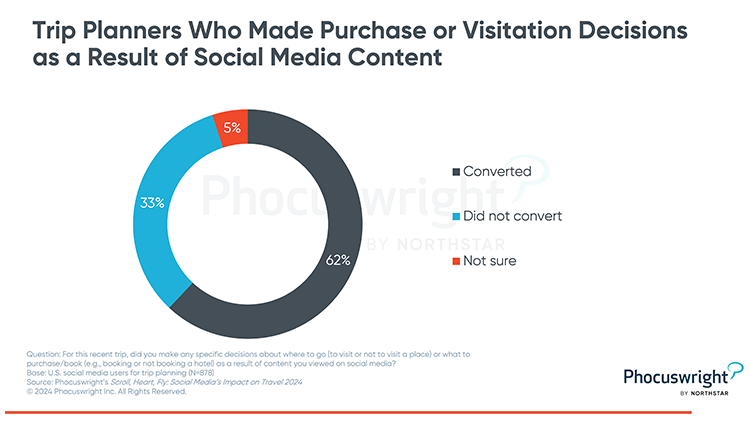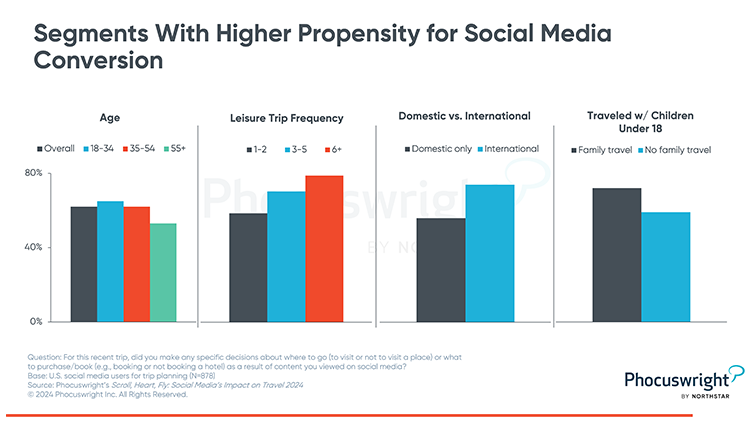Social networks are awash with travel content, but a formula for conversion continues to evade marketers. The term “funnel” evokes imagery of customers cascading from brand awareness to purchase and visitation, but in reality, the travel purchase funnel is far from linear. According to Phocuswright’s latest report F is for Funnel: Social Media and the Path to Travel Purchase, social media users begin collecting information on travel options before they have even carved time out to take a trip, much less booked it. Only when planning is in full swing do they then go on an active pursuit for relevant content. People who use social platforms for trip planning run the gamut from those who never apply the content to their actual trip decisions to those who consider it a critical tool for their trip.
Phocuswright research on social media usage in travel unpacks the demographics of those who use social media for e-commerce and what motivates them to use social platforms for trip decisions. Users who convert are quite distinct from those who don’t, both in their use of the platforms and in the way they relate to them in general. They feel more confident navigating content and finding reliable sources of information, and have discovered sincere connections and community through social media while having confidence in their ability to parse out what’s real and what’s not.
Along with massive opportunity to use social media as a marketing channel, there are signs that it is not being tapped to its fullest potential. Users feel like they are under-targeted and that there is a lack of content that fits their taste, while fears about fake or misrepresented travel content are reaching a crescendo. Research insights on who is converting and who is not can inform what makes social media content work for the trip funnel, and how it can be optimized for broader and stronger appeal in future campaigns.
Who’s Who: The Converter Profile, Psychographics and Habits
Travel social media content is influential, though it may be difficult to attribute impact to any singular exposure. Close to two in three of those who used social media for trip planning reported that for their most recent trip, they made a trip purchase or visitation decision as a result of content they viewed (see Figure 1). This influence shows little regard for gender; men and women are equally likely to have social content affect their travel decisions, nor is it impacted strongly by household income.
But there are some segments that have a higher propensity to be swayed by social content:
Age: Close to two in three travelers under 55 say they converted due to social media content for a recent trip.
Trip Frequency: The more someone travels, the more likely they are to convert through social media. This group of savvy travelers use many more digital tools at their disposal for trip decisions, and social media is no exception. The technological resources may come into play for them as efficiency tools, streamlining the process of trip planning for these travelers.
International Travelers: International travelers are significantly more likely than domestic-only travelers to make decisions through social media content.
Families with Children Under 18: Transparency and expectation setting are of high importance to this segment, and the social media ecosystem can serve their more individualized quest for information.
Phocuswright’s F Is for Funnel: Social Media and the Path to Travel Purchase is part of a comprehensive consumer research study delving into the specifics of how social media platforms are used for travel. Key questions addressed include:
For more insights, explore Phocuswright’s Open Access research subscription.
Open Access gives you company-wide access to all expert-driven research reports and interactive data so your team can identify emerging trends and seize new opportunities faster.










